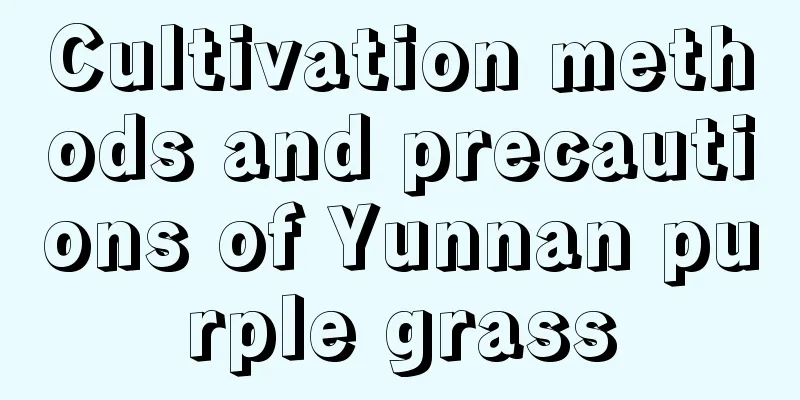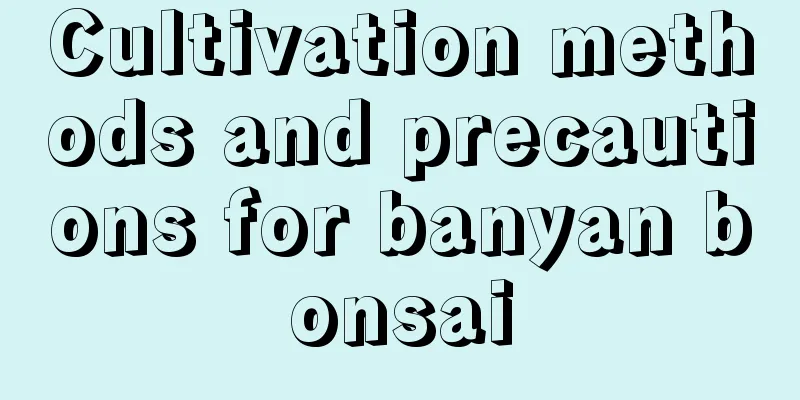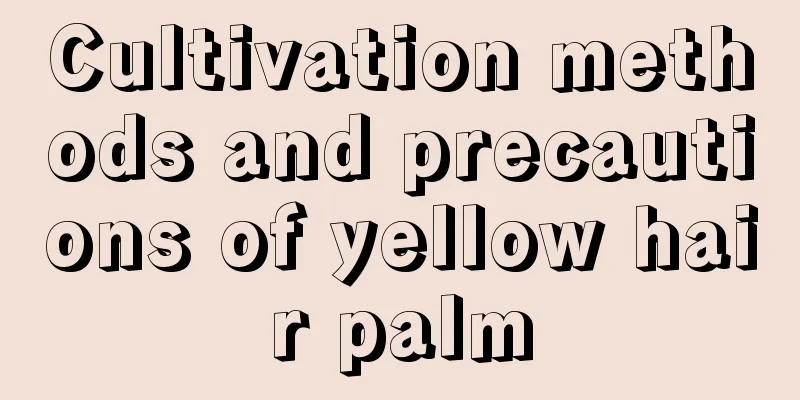Cultivation methods and precautions of Yunnan purple grass

1. Maintenance methods1. Temperature: It does not have high requirements for the temperature of the maintenance environment. The minimum temperature cannot be lower than ten degrees, and the maximum temperature cannot exceed thirty-five degrees. During this period, it can grow normally. 2. Watering: Water it thoroughly when it is dry, especially in the dry season. Water it fully each time. If it is rainy season, drainage needs to be done well to prevent the roots from being soaked in water for a long time and causing root rot. Its roots are very sensitive, and if they are kept in water for a long time, they are prone to root rot. 3. Fertilization: Before planting, 7,000 kg of animal manure is needed per hectare of soil. This is to ensure that it has sufficient nutrients in the early stages of growth. When the plant reaches the growth period, it needs to be fertilized once a month. The fertilizer should be a comprehensive and nutritious compound fertilizer. 4. Light: It can receive full-day sunlight. If it cannot receive full-day sunlight, at least six hours of light per day must be guaranteed. 2. Breeding techniques1. Reproduction: It can be propagated by sowing, and the sowing time is divided into autumn sowing and spring sowing. The time for autumn sowing is November. Spread the seeds evenly on the soil, cover with three centimeters thick soil, and then press it slightly. Seedlings will emerge in about ten days. If the seeds are sown in spring, they must be treated with low temperatures so that the embryos can develop more maturely. If dry seeds are sown, the plants may not germinate that year. After the seeds are prepared, sow the seeds evenly in shallow trenches with a row spacing of 15 cm and cover them with soil. 2. Filling the seedlings: During the seedling stage of the plants, it is necessary to check for gaps and fill in the sparse areas with seedlings. Filling the seedlings should be done on rainy days or in the evening, and watering is required after filling. 3. Problem Diagnosis1. Pests: The pests of Yunnan lithospermum include ants, cutworms, weevils, etc. They can be killed manually or by using poison bait. 2. Pathology: It is susceptible to leaf spot disease. After infection, irregular spots will form on the leaves of the plant. If found, the diseased plants need to be pulled out and destroyed in time, and then sprayed with Bordeaux liquid for treatment. IV. Other issues1. Edibility: It is not edible, but can be used as medicine. 2. Is it suitable for family breeding? It is not suitable for family breeding. Because it has certain medicinal properties, if it is accidentally consumed, it will have certain side effects, so it is not recommended for home breeding. |
<<: Cultivation methods and precautions of Atractylodes lancea
>>: Cultivation methods and precautions of winter vegetables
Recommend
What is the best month to plant greenhouse tomatoes?
When to plant greenhouse tomatoes Greenhouse toma...
Diseases and their control of moss phlox
Diseases and their control of moss phlox The main...
Cucumber planting time and method
Cucumber generally refers to the tenderer cucumbe...
How to care for agapanthus in winter and what to do if it doesn't bloom
1. How to care for agapanthus in winter 1. Adequa...
Should the flower stems of succulent plants be cut off (Does the long flower stems of Dongyun succulent need to be pinched)
It is not necessary to cut off the flowers of Don...
Knowledge on cultivation and care of Lycoris
temperature Many members of the Amaryllis family ...
The difference between Xifu Begonia and Hubei Begonia
1. Differences in flowers: 1. When the crabapple ...
Will asparagus fern bloom and bear fruit?
1. Will it bloom? Asparagus fern is a plant with ...
Is jasmine easy to grow?
Jasmine , known for its white flowers and rich fr...
How many times can Jerusalem artichokes be planted in a year? Do you need to plant them again the next year?
How many times a year can Jerusalem artichokes be...
Environmental conditions and characteristics of Masson pine growth
Environmental conditions and requirements for the...
What to do if you water your money tree too much?
Determine if the money tree is overwatered If you...
Summer maintenance methods of Amaryllis
Moisture Amaryllis prefers a humid environment, b...
How to propagate the succulent white flower pine
Seed propagation When propagating white flowered ...
How to grow catnip
1. Breeding environment 1. Light: The catnip is r...









